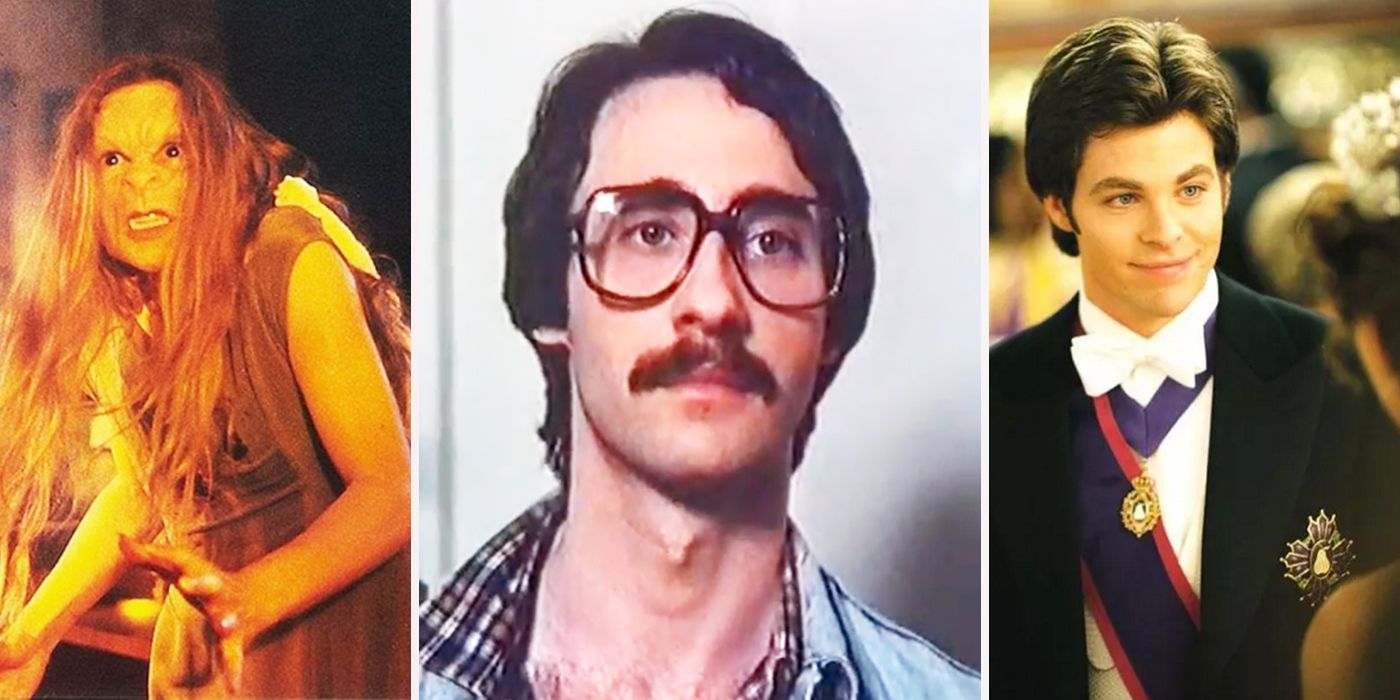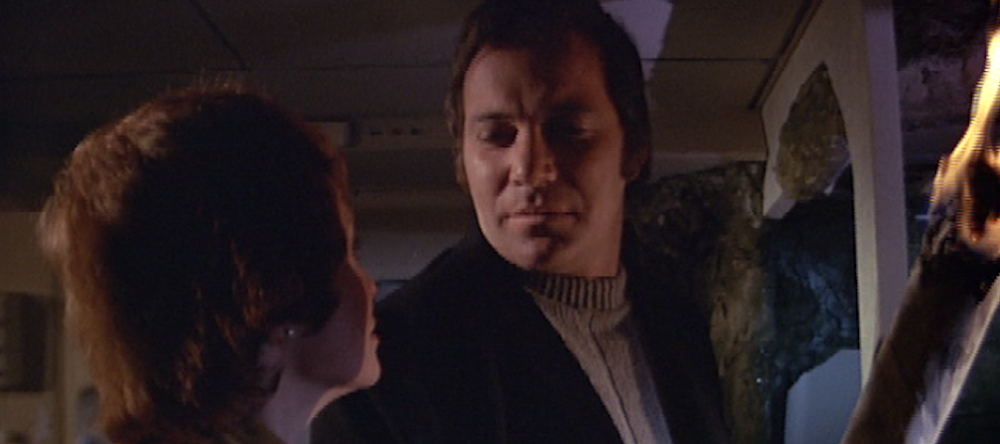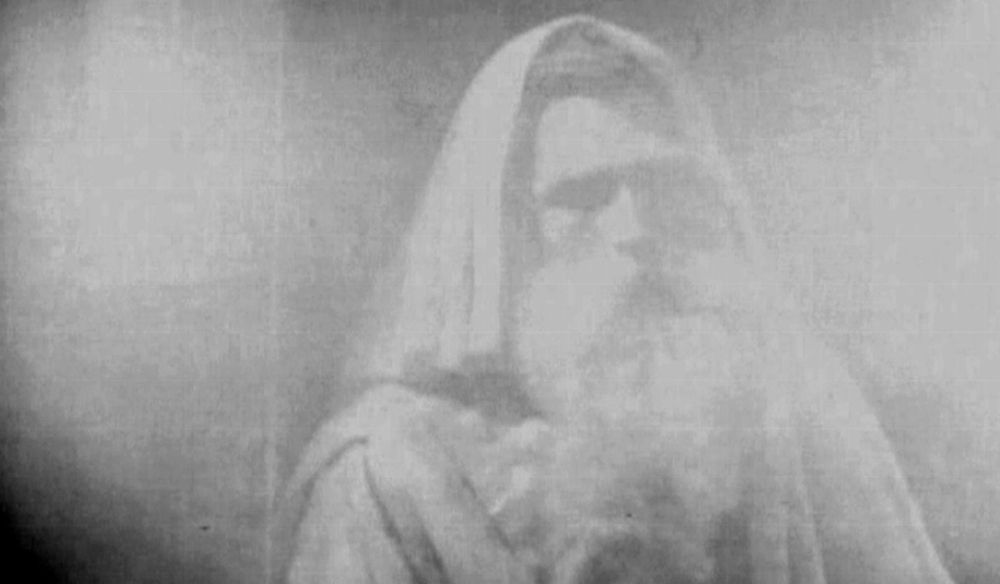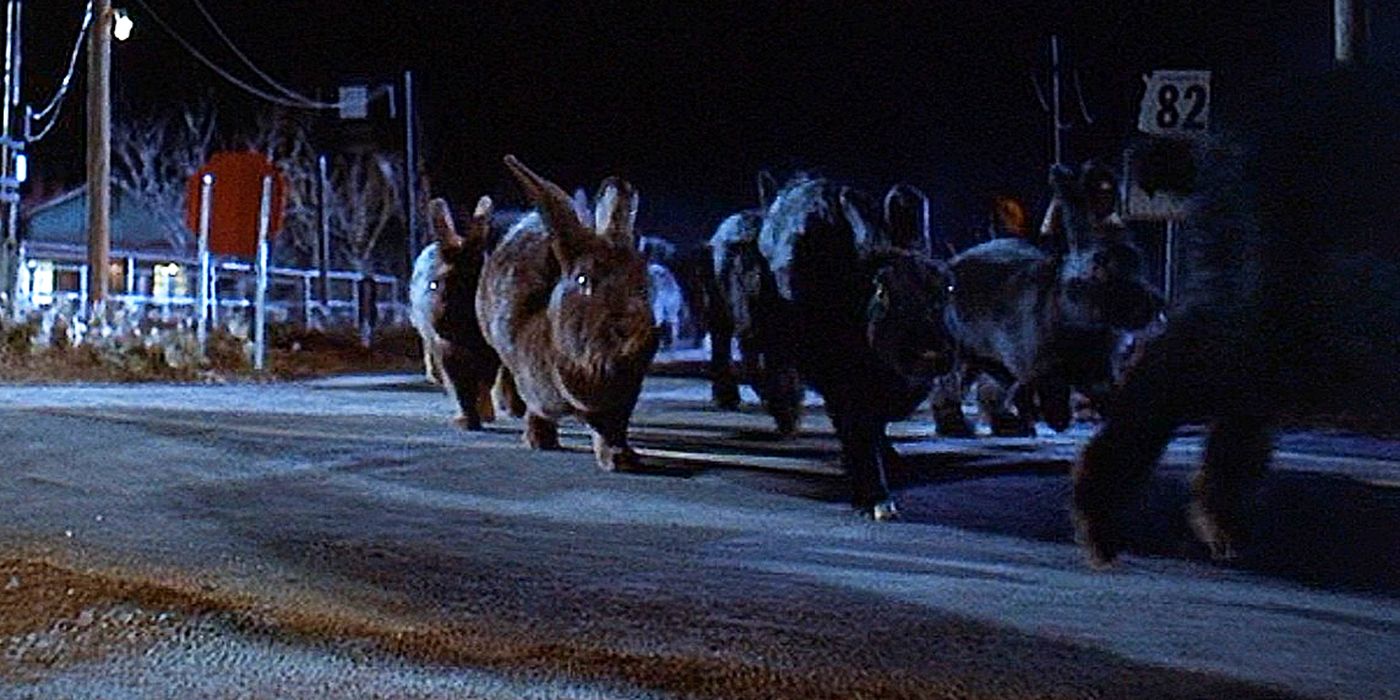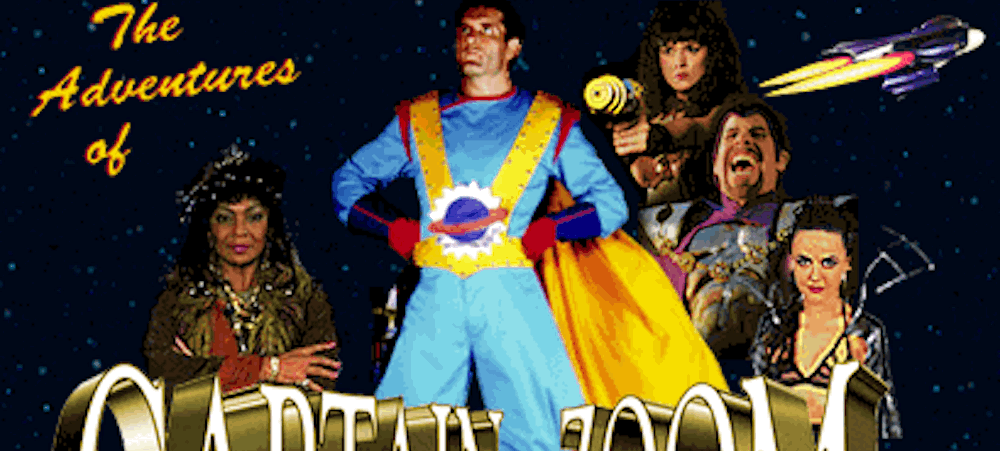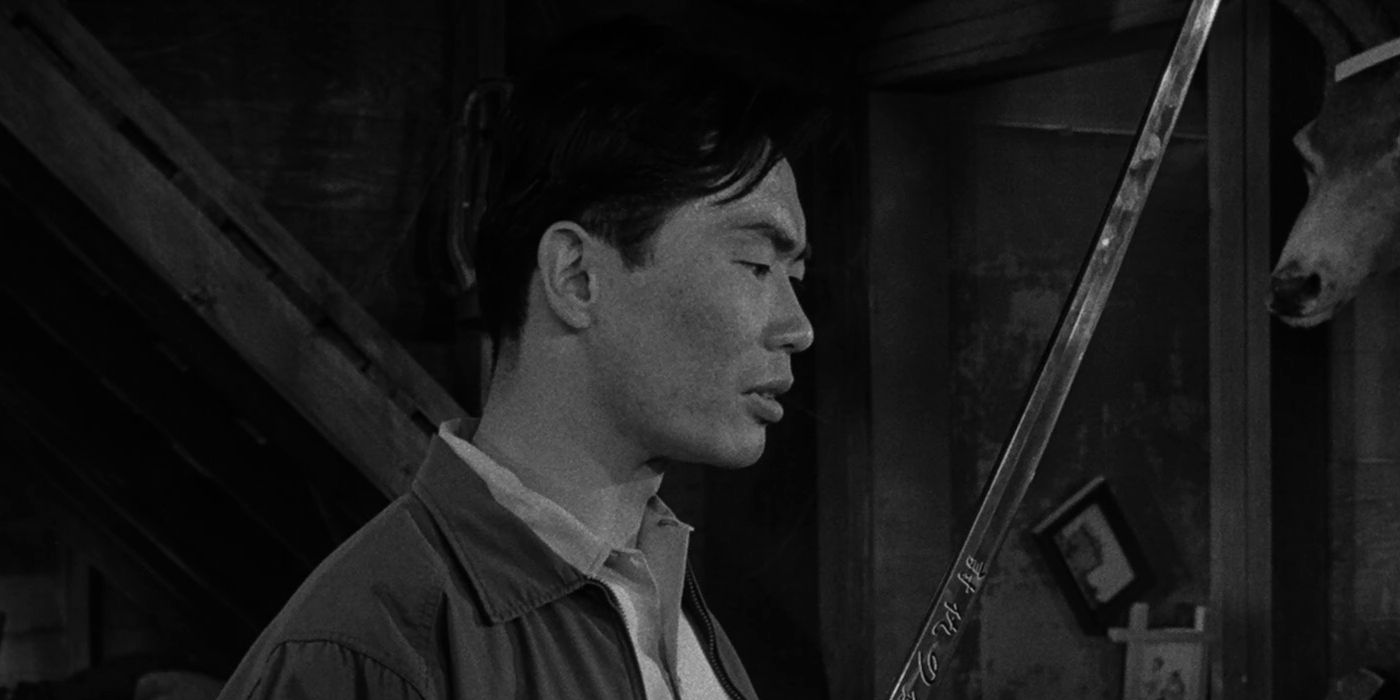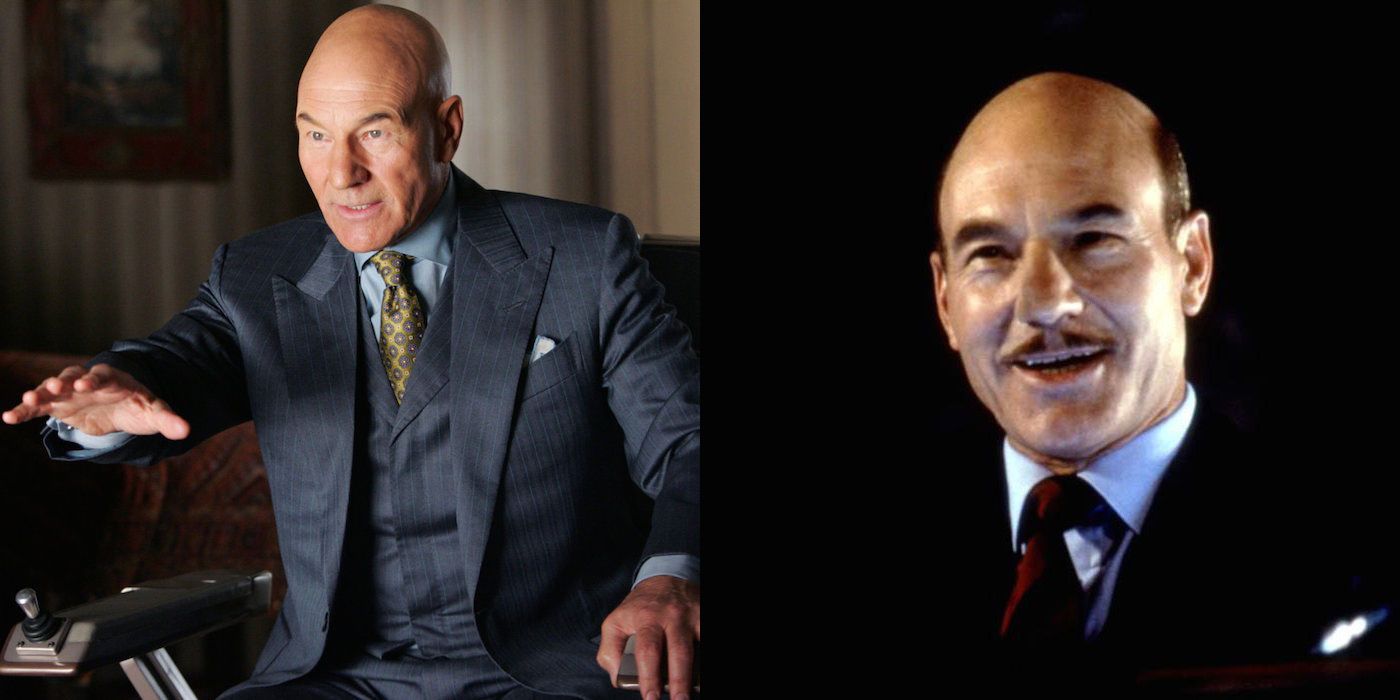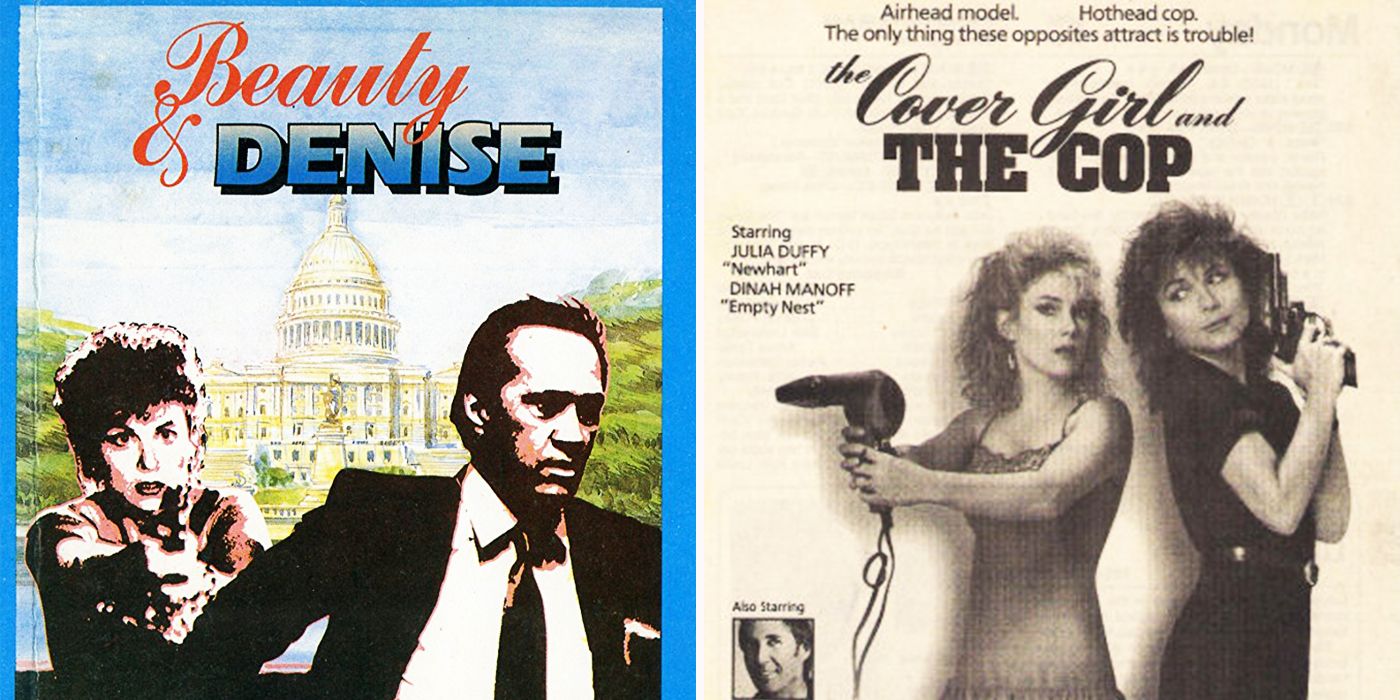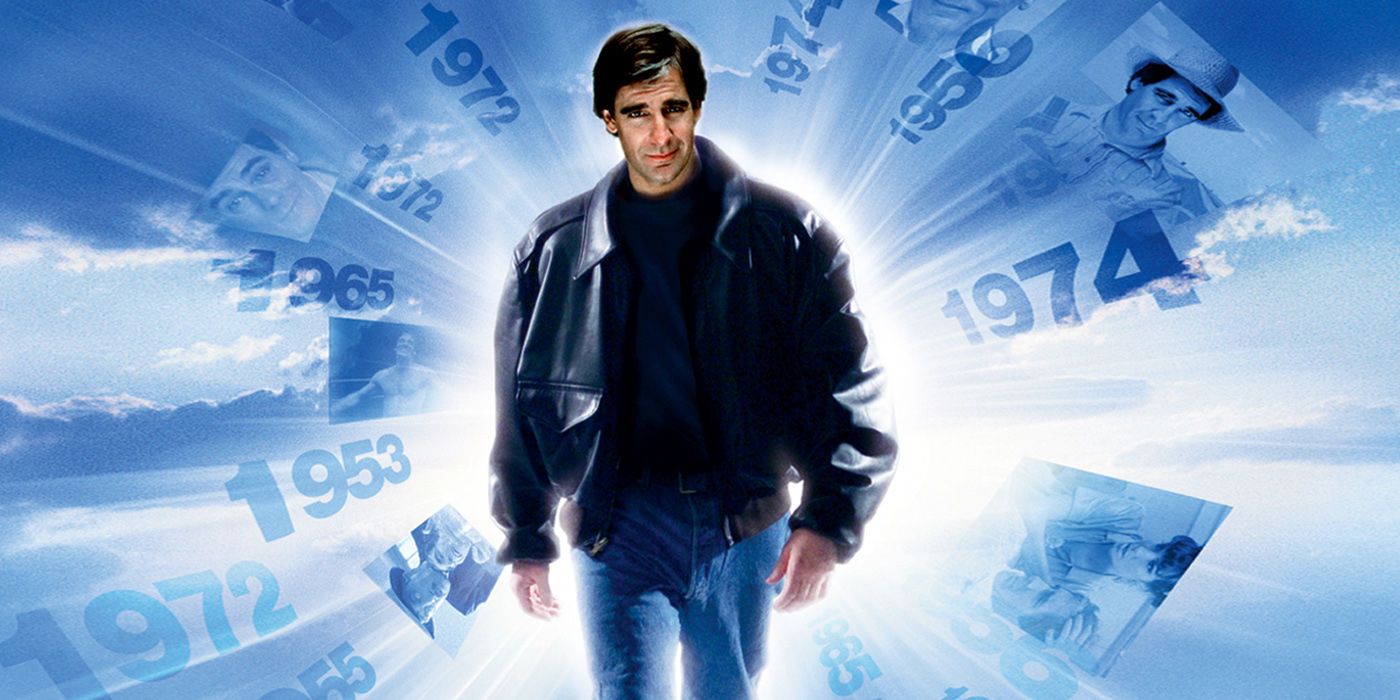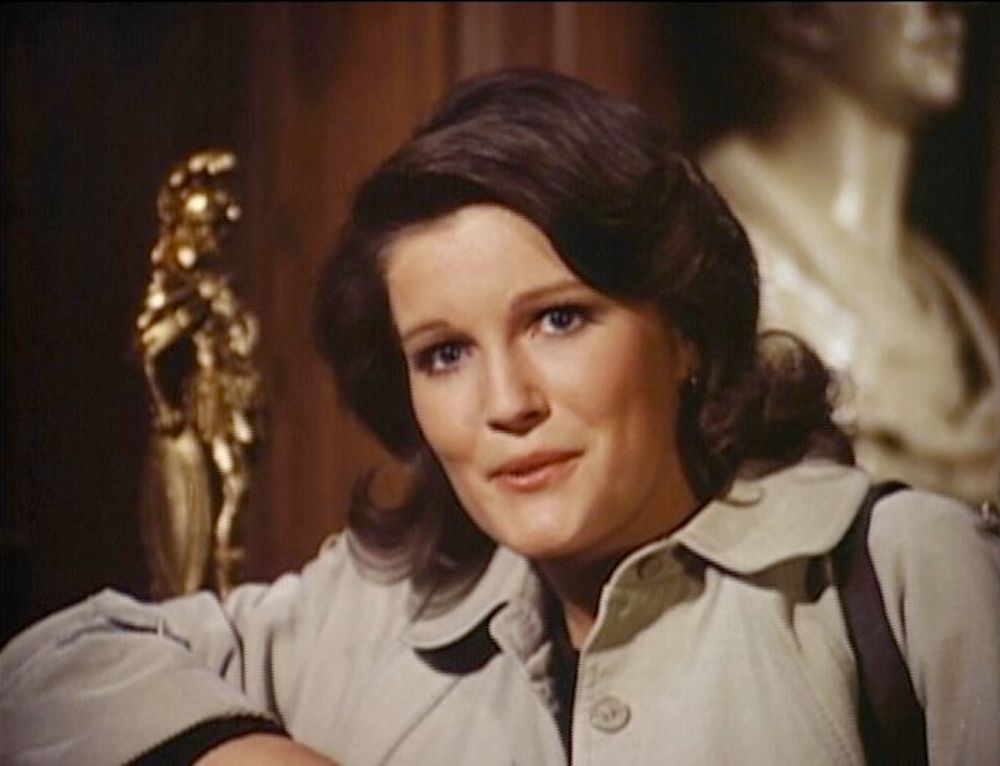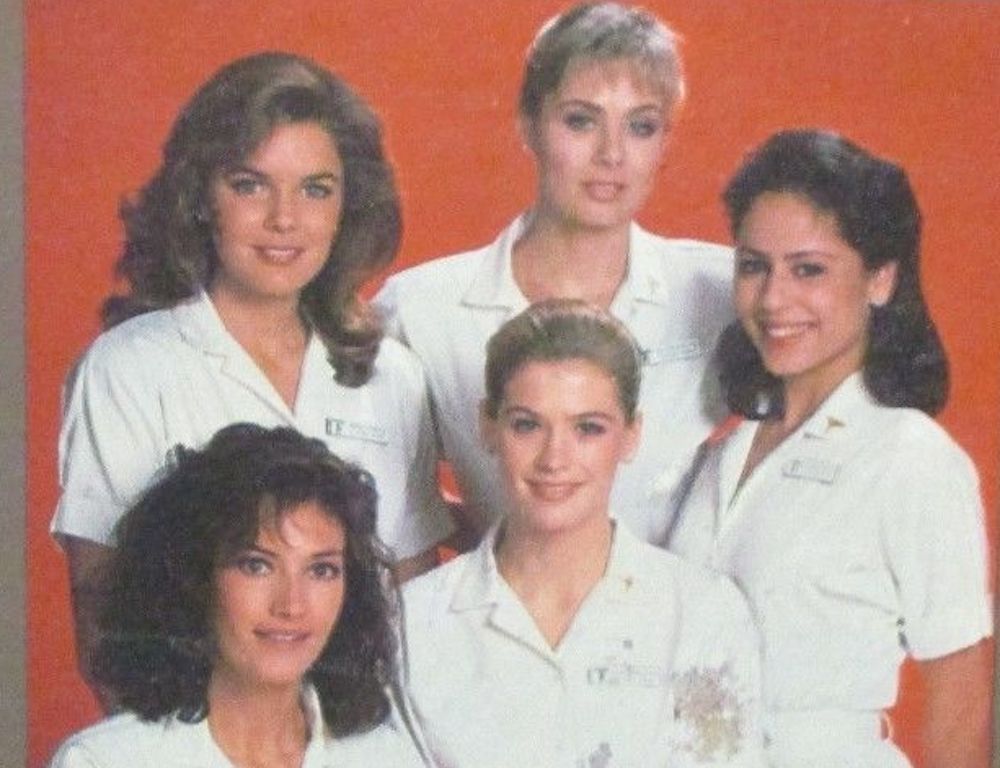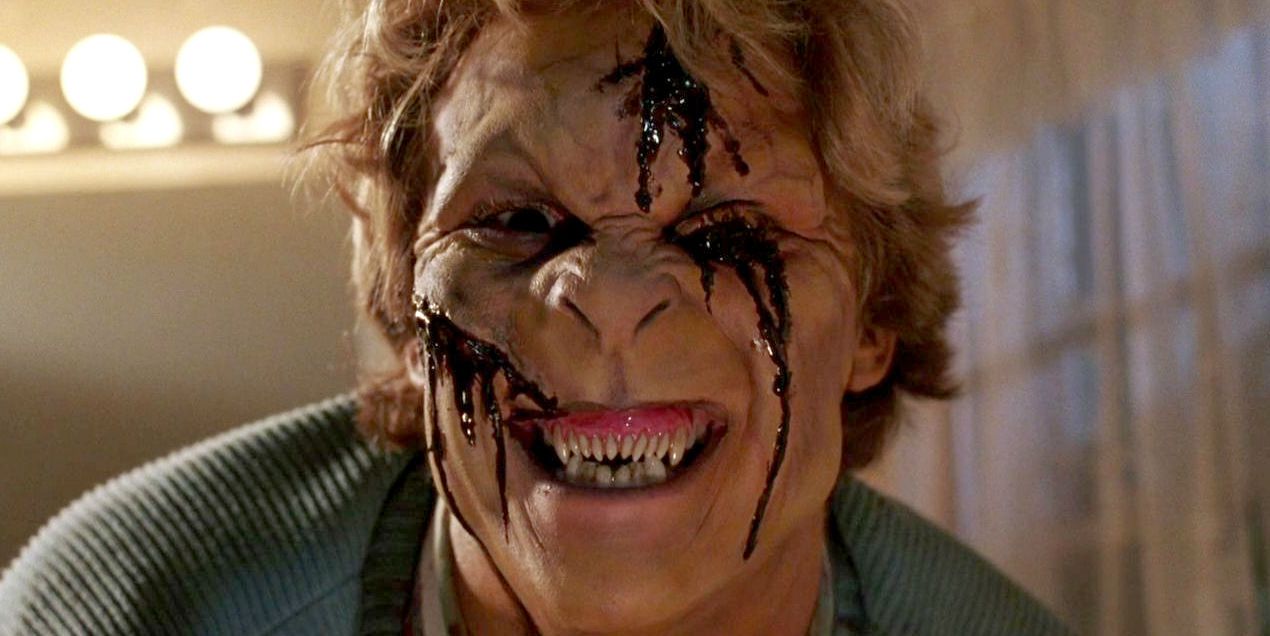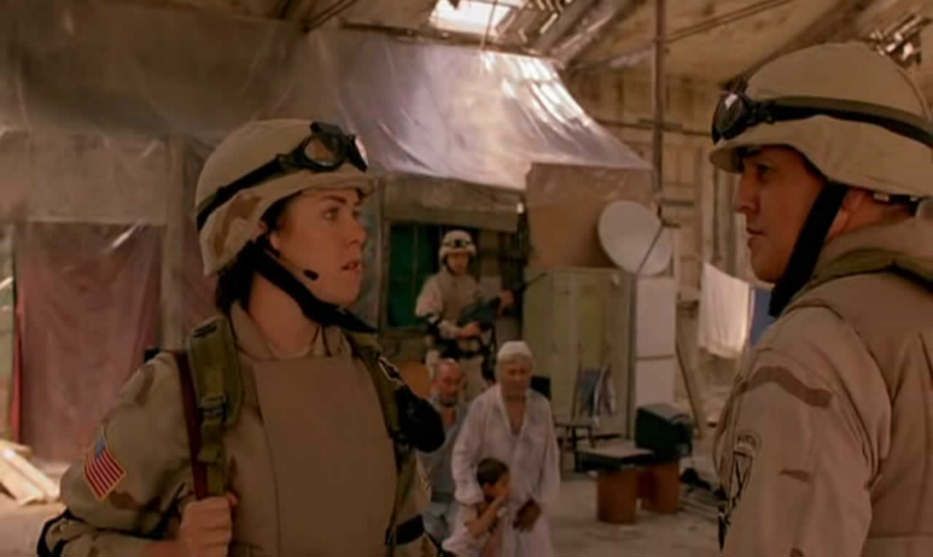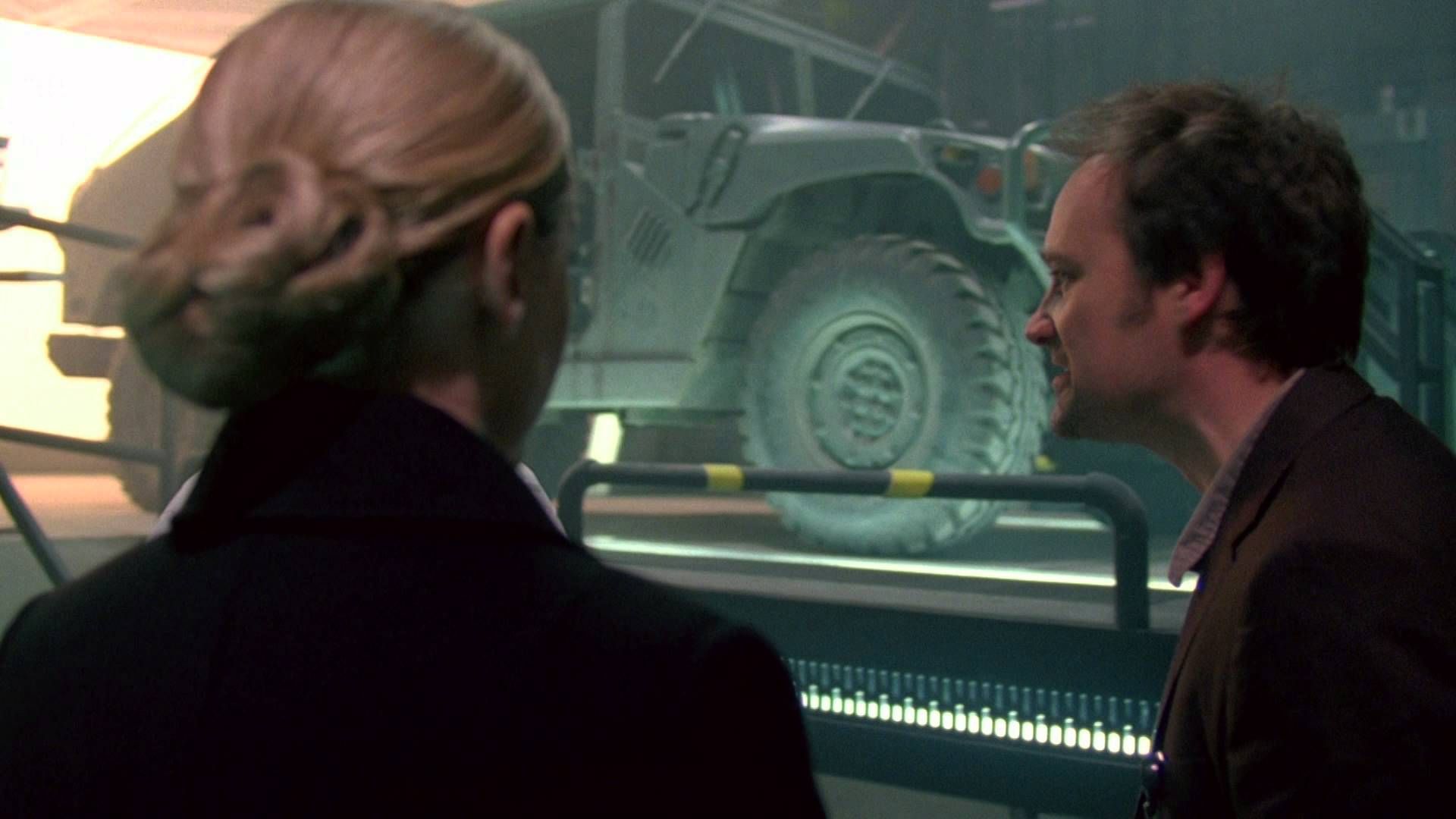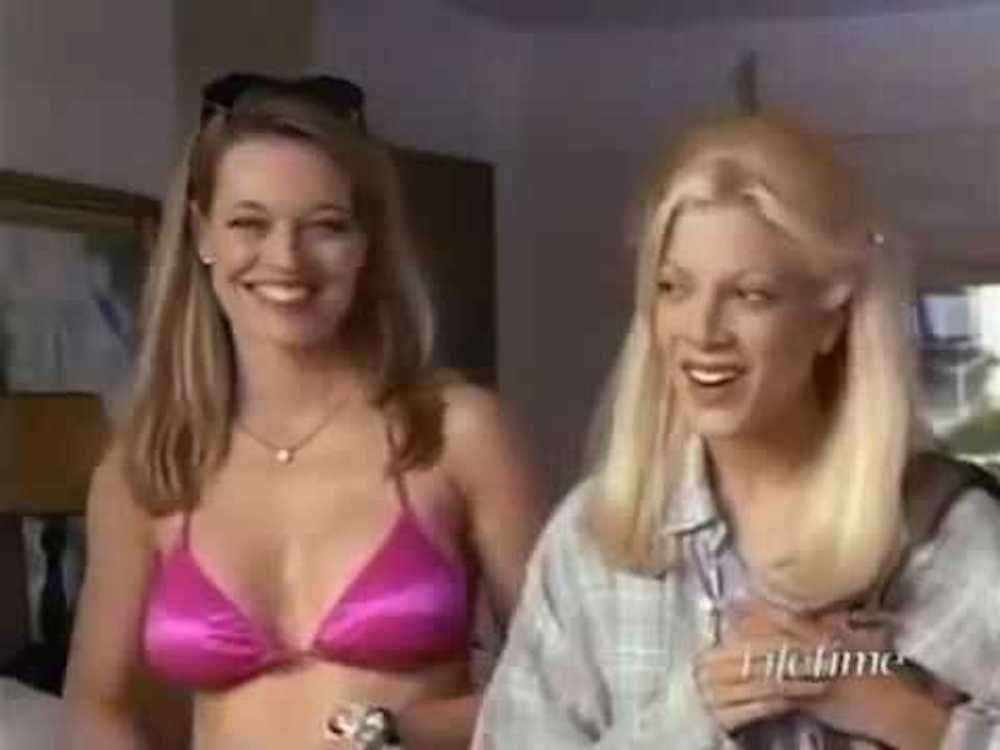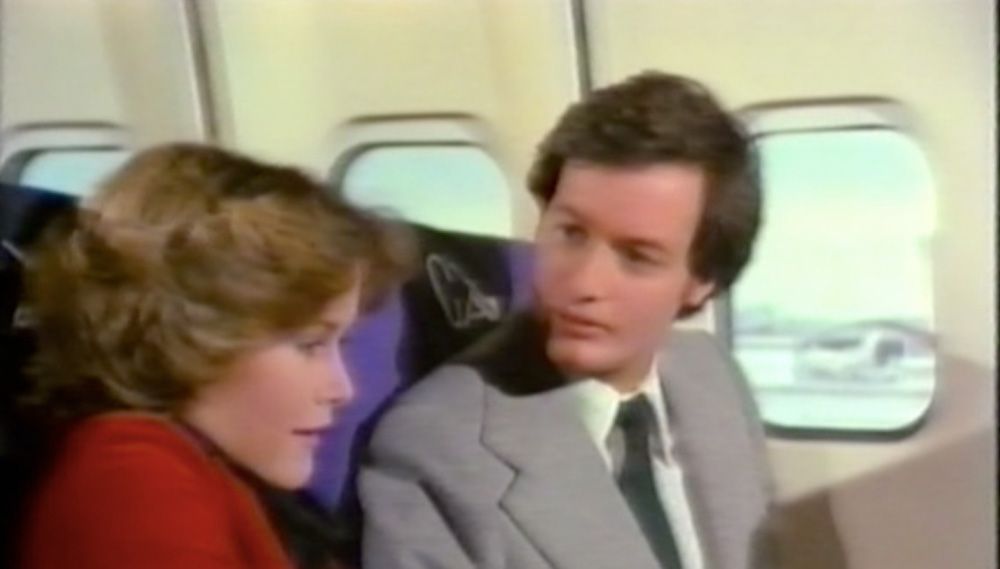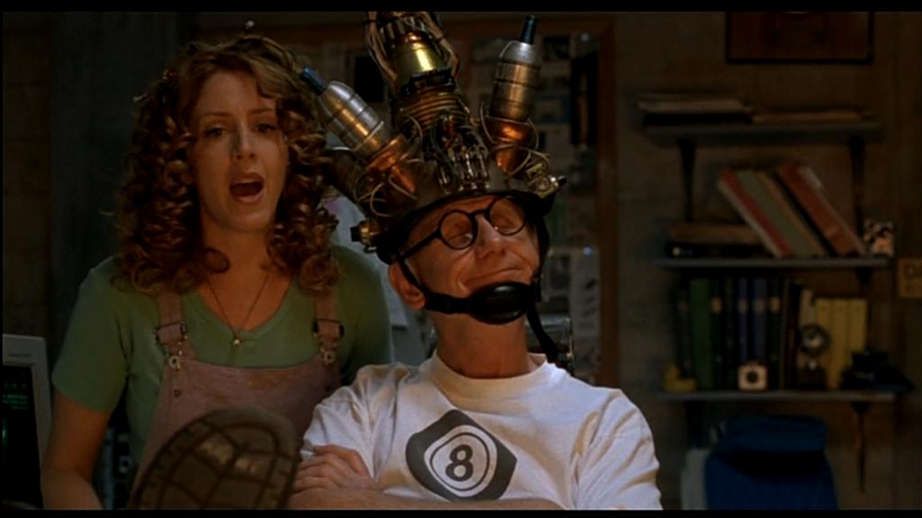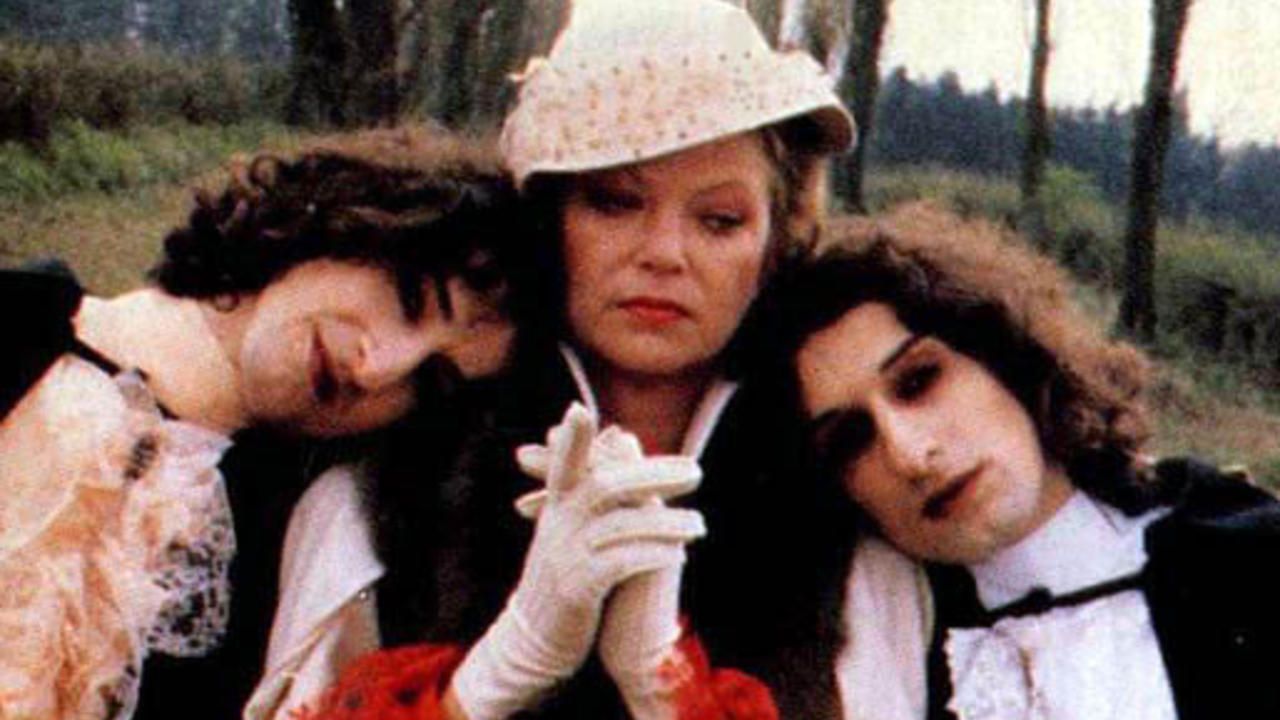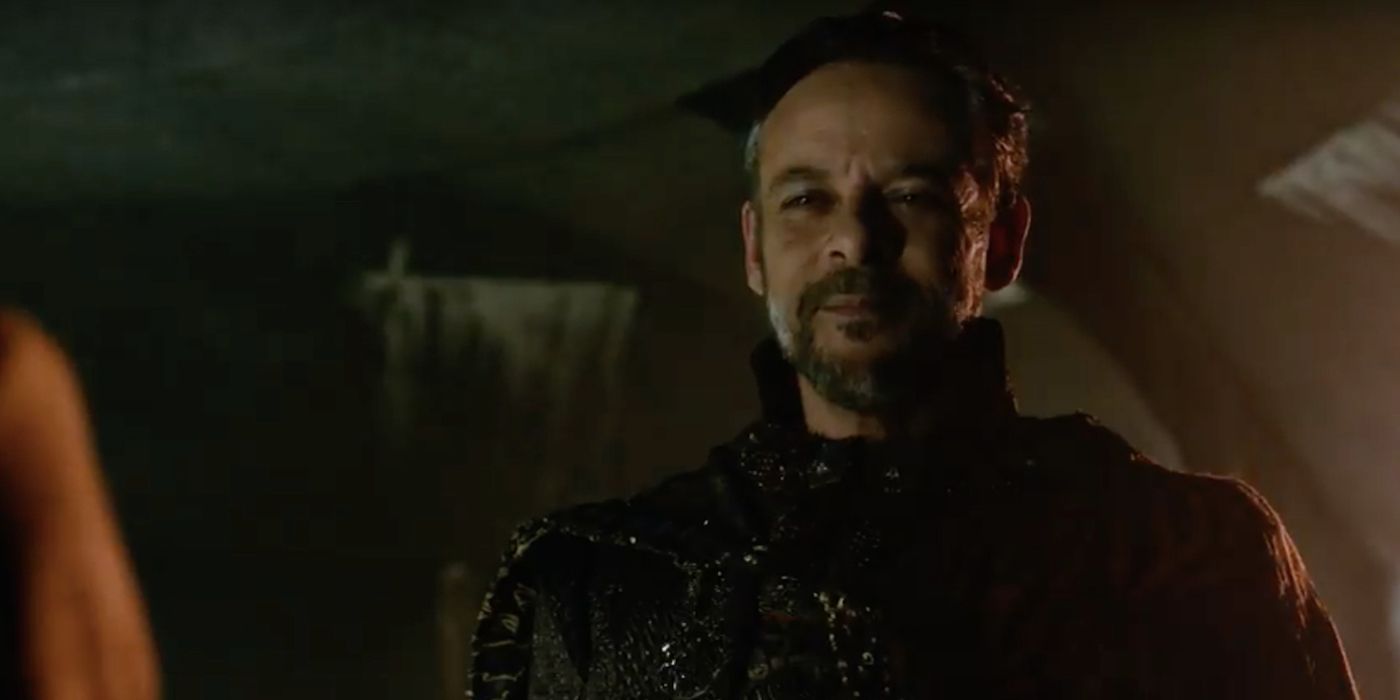No Star Trek actor ever got up in the morning thinking “Gee, I hope my agent’s going to sign me up for something awful today.” But it happens.
Actors end up in bad roles for lots of reasons. The project sounded great, but the execution was awful. They need to earn a paycheck and nobody offered them Hamlet that week. It’s a walk-on part or a guest role so they didn’t have to worry about the production as a whole. In the case of Trek, you have a franchise that’s lasted more than 50 years, with a half-dozen series and multiple movies. Throw in that many actors for that long a time and embarrassing roles are inevitable.
Here are 25 such roles — we could have added a lot more — the stars won’t be bringing up in discussion of greatest career highlights. That doesn’t mean the actors themselves did a crappy job. Sometimes they’re trapped in a production that failed all the way around. Sometimes it’s just a walk-on to give some other SF show a touch of Trek’s luster (or so the producers hoped).
Rampaging rabbits. Robert Heinlein knockoffs. Bad comedy. Bad horror. You’ll find it all here. The actors might prefer to forget the production, but IMDb never forgets!
Here are 25 Embarrassing Roles Star Trek Actors Want Us To Forget.
William Shatner: The Horror at 37,000 Feet
In Twilight Zone’s “Nightmare at 20,000 Feet,” William Shatner gives a great turn as a man convinced there’s a monster on the wing of a plane. Flying 17,000 feet higher, he didn’t do so well.
1973’s Horror at 37,000 Feet follows the standard airplane-in-jeopardy formula Airplane! parodied so well. There’s a diverse group of passengers on board including a neo-pagan, a country singer, a wealthy architect and alcoholic priest Kovalik (Shatner). Together they face a threat that could send the transatlantic flight crashing to Earth. In this film the threat is supernatural: the architect (Roy Thinnes) is transplanting some Brit ruins to his American estate, unaware they contain a Druidic altar. The druids consider the relocation sub-optimal.
The result is a freezing headwind holds the plane in place no matter which direction it flies. Mold, chanting and freezing cold flow out of the cargo bay. Kovalik realizes dawn will banish the dark powers, but can the passengers last that long? Will they have to give the druids a human sacrifice? The sun rises in time but tormented, self-doubting Kovalik looks into the hold before the spirits vanish. He dies.
On paper Horror has the cast and a concept that could have worked, but it never catches fire.
Leonard Nimoy: The Brain Eaters
If Leonard Nimoy appearing in a Heinlein adaptation sounds like a great idea, you obviously haven’t seen 1958’s The Brain Eaters. It's not officially an adaptation of Heinlein's The Puppet Masters but Heinlein thought it close enough that he sued (it was settled out of court).
Much like Puppet Masters, this has alien slugs taking over the inhabitants of a small town as Phase One of world conquest. First a blazing light appears over Riverdale (no, not that Riverdale), then a big indestructible cone shows up on the ground. Scientists and investigators show up to learn why. By then the slugs have oozed out of the cone and taken control of the locals. They don't eat their hosts' brains, but they dissolve them with acid if threatened.
Unlike Heinlein, the cone is actually subterranean — the slugs come from within the carboniferous rocks below town. So what made the light in the sky? How did the slugs build the cone before enslaving any humans? The script has no answers.
Nimoy appears as grey-bearded Professor Cole, living in a cavern with the slugs.
He serves them willingly because once they take over, human war and conflict will be replaced by “a life free of strain and turmoil.” Nimoy’s not the worst thing in the film, but he doesn’t cover himself with glory either.
DeForest Kelly: Night of the Lepus
“You know what would make a great horror movie? Flesh-eating giant rabbits!” said no-one ever. Except for the writers of 1972’s Night of the Lepus.
Rather than spray poison to exterminate he rabbits overrunning his land, a rancher turns to two scientists (Stuart Whitman, Janet Leigh) for a solution. Their experiments on the bunnies make them mutate into towering giants that eat people. And the mutants breed like rabbits! How long before there are enough to devours all of us?
Admittedly giant-monster movies have picked some odd monsters over the years, but rabbits?
Rabbits are cute — pests on farms, sure, but they look too sweet to be scary. The idea could work in a comedy, but Lepus plays it straight. Some camera shots attempt to make rabbit faces ominous and terrifying but it just can't be done.
Kelly plays Clark, the head of a local college who kicks off the plot by introducing the scientists to the rancher. Other than that there’s nothing memorable about his role, though the fault lies in the writing, not Kelly’s talents.
Oh, in case you were worried, the rabbits don’t devour us all. The protagonists call in the military who wipe out the rabbits by driving them onto an electrified train track. Humanity is saved!
Nichelle Nichols: The Adventures of Captain Zoom in Outer Space
There’s an old rule of writing that a good concept means nothing without good execution. 1996’s The Adventures of Captain Zoom in Outer Space has the same concept as Galaxy Quest, but it’s not even a quarter as entertaining.
Daniel Riordan plays Ty Farrell, a 1950s actor who plays TV space adventurer Captain Zoom. After the evil Vox (Ron Perlman) conquers the planet Pangea and captures Princess Tyra (Liz Vassey), the Pangeans pick up a broadcast of Zoom battling against similar alien tyrants. He must be the liberator of prophecy! Just as in Galaxyquest, the Pangeans get an actor instead of a hero. Farrell is a boorish egomaniac though he gradually, sort-of becomes the hero they need him to be.
Had this pilot gone to series, presumably we’d have had tongue-in-cheek planetary adventure in the Hercules style. It didn’t go to series. Part of the problem is that parodying Trek makes for universal recognition; how many people have the same connection to low-budget 1950s TV space opera? A bigger problem was that Captain Zoom wasn’t that funny.
As the Pangeans’ prophet, Nichols is there primarily to give sci-fi fans an extra reason to tune in.
Nevertheless, naming her character Sagan (for Carl) is one of the funnier bits in the movie.
George Takei: Twilight Zone: The Encounter
George Takei actually gives an excellent performance in this episode, one he’s quite proud of. However, many Japanese-Americans would be happy if it were forgotten. Their protests are why “The Encounter” didn’t air in syndication in the United States.
In this two-person show, Neville Brand and Takei play Fenton and Arthur, a homeowner and the guy he hires to do some yard work. Fenton is a bigot who hates the Japanese and brags about exterminating a Japanese officer (he keeps the man’s sword as a souvenir). When the house mysteriously traps the two men inside, a violent collision seems inevitable.
Takei, still at the start of his career, was thrilled to have such a large, meaty role in an A-list TV series. Both he and Brand deliver fine performances. The script though, has problems. The big reveal is that Arthur’s father was a traitor who helped guide Japanese planes to their targets at Pearl Harbor. Dramatically this plays out awkwardly, as if it taints Arthur the way Fenton's history of violence taints him.
What's worse is that it perpetuates one of WW II’s nastiest American myths, that Japanese Americans were traitors destroying America from within. In reality, no Japanese Americans were involved in sabotage. The protests were understandable.
James Doohan: Homeboys in Outer Space
Having James Doohan guest star in a couple of Homeboys in Outer Space episodes was probably another example of using Trek actors to buff up lesser science fiction materials.
One review said it was what the UK’s Red Dwarf would be like if you lobotomized the entire cast.
As you can guess from the title, this goes back to the days UPN aired lots of shows with lots of black stereotypes. Flex Alexander and Darryl M. Bell star as Ty and Morris, two bumbling, space adventurers traveling across the cosmos in the Hoopty, which from the outside looked like a beat-up car. Anyone who stuck around for the entire run got to see them battle evil parallel-world counterparts, get trapped in a blaxploitation film, and work in a male dance club on an all-woman planet. Few viewers stuck around.
The reviews were not kind. The show made #31 on TV Guide’s list of the 50 worst shows of all time; Ebony listed it as #6 of the ten worst black shows ever. UPN shows made up 50 percent of the Ebony list.
Doohan can’t be blamed for how badly Homeboys was, but fans who tuned in just to catch him may have wished they hadn’t.
Patrick Stewart: Masterminds
According to film critic Roger Ebert, Patrick Stewart provided all the suspense in 1997’s Masterminds: “Can he make it from beginning to end of this dreadful movie without lowering himself to its level of idiocy? Or will he go down with the material?” Ebert concluded that Stewart’s dignity and presence survived intact — well, except for the climax where he’s riding a dune buggy through a sewer.
Masterminds recycles cliches from countless marginally better comedies (as Ebert says, “there are few worse films to borrow from”) in which crooks find themselves hopelessly outmatched against kids, tweens, or teens. The protagonist, Ozzie, is a high-school hacker and troublemaker who’s just been kicked out of his prestigious private school. When Ozzie sneaks back onto campus he discovers security chief Bentley (Stewart) plans to hold the children of several wealthy families for ransom. Ah, foolish Bentley — needless to say his brains and his henchmen are no match for Ozzie’s ability to cause chaos. Bentley goes down and Ozzie redeems himself.
It’s nice to think Stewart can give a good performance even in a bad film. It doesn’t make the film worth watching, but at least he has a better mustache than Brent Spiner wore in Rent Control.
Brent Spiner: Rent Control
In 1980, Brent Spiner had a small part in Woody Allen’s Stardust Memories. Four years later he played the lead in Rent Control, a wannabe quirky, Woody Allen-style comedy about the frustrations of life and love in New York.
Spiner gets what amounts to the Woody Allen role in the film.
As struggling writer Leonard Junger, he’s divorced, romantically frustrated and dreaming of finding a rent-controlled apartment he can afford. He has the same success at finding one as he does scoring with women — none at all. Except at the end of the film, he improbably winds up with both.
The one thing Leonard does have is that horrible mustache. It’s easily the most memorable thing in the film, which otherwise fades into oblivion five minutes after it ends. There were characters doing stuff and saying things, and Leonard being a loser and there was some sort of plot.
Unlike some of the actors in this list, Spiner has to take a lot more of the blame for the movie falling flat. He is, after all the lead. On the other hand, Rent Control’s such a tedious mess that it’s unlikely even a brilliant performance would have saved it.
Jonathan Frakes: The Cover Girl and the Cop
Like danger on a plane, forcing polar opposites to work or live together is a tried and true film formula. It worked in films including The Odd Couple, Rush Hour, and Midnight Run but 1989's Cover Girl and the Cop? Not so much.
Unlike Spiner and Stewart's entries here, Jonathan Frakes only has a supporting role. The stars are Julia Duffy as Jackie, the pampered cover girl, and Dinah Manoff, as Denise, the tough-as-nails cop. When Jackie witnesses Slade (David Carradine) carrying out a hit, Denise winds up guarding her. When it turns out Slade has allies in the police department, the two women have nobody to rely on but each other. Jackie finds she’s tougher than she ever realized; Denise discovers she can charm a man’s socks off.
Both stars and Frakes have done good TV work on other projects and the secret behind Slade’s crime is pretty clever. Somehow, though, everything falls flat in execution, maybe because the leads roles are written more as cartoons than people. In the end, a capable cast couldn’t overcome a subpar script.
Releasing it on DVD under another name (Beauty and Denise) didn’t make this film any better, though it might have tricked a few people into buying it.
Scott Bakula: Infiltrator and I-Man
Before Scott Bakula became captain of the Enterprise, even before Quantum Leap, it was obvious he had series-star potential. First came the lead in the short-lived comedy Gung Ho.
In 1986 and ’87 he starred in two sci-fi pilots about a man who gets superpowers along with an “i” name — I-Man and Infiltrator.
In the first of these, Bakula plays Jeff, a cabbie who with his son helps rescue some NASA workers from a crashed truck. Little do they know the truck carried a canister of alien atmosphere — and it was leaking! The duo start figuring things out when they discover they now possess healing factor. Burns, bullets, whatever, they bounce back from the damage in seconds. So when their country asks them to stop a power-hungry millionaire threatening the world, they step up to the plate.
In Infiltrator, Bakula plays Sanderson, a brilliant scientist who’s just invented teleportation. When Sanderson makes a test run, he unfortunately collides in teleport-space with the Infiltrator, a super-robot developed by Langdon (Deborah Farentino). That fuses man and machine together, so that under pressure Sanderson transforms into an unstoppable killing machine. Can the man-machine hybrid stop bad guys from stealing the technology?
We can all be happy that neither pilot was picked up so Scott Bakula could find fame as Sam Beckett, Quantum Leaper, instead.
Kate Mulgrew: Mrs. Columbo
Mrs. Columbo may be unique in the annals of spinoffs: everyone involved with Columbo insisted it wasn’t a spinoff at all.
In the classic mystery series Columbo, Peter Falk’s rumpled detective made constant references to his wife, whom we never saw. After the series ended in 1977, NBC president Fred Silverman decided a spinoff about the unseen wife might squeeze some more mileage out of the name. Kate Mulgrew was cast as Kate Columbo, a stay-at-home mom and amateur detective just as good at crime-solving as her husband, who didn’t appear any more than she had on his show.
Silverman had the clout to green-light the series, but he couldn’t make Columbo’s creators like it. They insisted adamantly that whoever Kate was married to, it wasn’t their Columbo. Falk didn’t like the idea any better. Neither, as it turned out, did the viewers. The show ran 13 episodes, then expired. Renaming it Kate Columbo and Kate Loves a Mystery didn’t help, neither did having her divorce her husband and retake her maiden name.
For anyone curious about the Columbo continuity issues, that series’ 1989 revival unsurprisingly took the creators’ side. There had been no divorce, Columbo was still happily married. Kate Callahan Columbo definitely tied the knot with some other Detective Columbo. Good to know.
Roxann Dawson: Nightingales
Medical drama has always had a special place on TV. St. Elsewhere, E/R, and Grey’s Anatomy have all been popular, successful and critically acclaimed. Too bad for Roxann Dawson that her first primetime series wound up being Nightingales.
Created by Aaron Spelling, Nightingales was about nursing the same way Spelling’s The Love Boat was about working on a cruise ship. The student nurses who boarded in Nightingale House spent an astonishing amount of time hanging out in the locker room discussing their love lives as they changed in and out of their nursing uniforms. They were all neatly tagged for easy identification: struggling single mother; rich and spoiled; woman in witness protection; sweet and innocent. As Yolanda, Dawson’s tags were "street-smart" and "Latino."
The role didn’t offer her a challenge, but none of the other roles did either.
Spelling protested that he was just dramatizing the lives and loves of contemporary young women — it was totally unfair to label the show Charlie’s Nurses. Real nurses took a dimmer view of the way the show portrayed them. Viewers didn’t warm to it either. Even all those attractive young women didn’t rack up enough interested eyeballs. The show vanished after four months.
Alice Krige: Sleepwalkers
A shapeshifting cat-woman who drains life energy from innocent people to survive isn’t as silly a monster as giant rabbits. As presented in Sleepwalkers, however, it's not much of an improvement.
In this Stephen King adaptation (based on an unpublished story), Borg Queen Alice Krige plays Mary, who with her son Charles (Brian Krause) is the last of their kind. Although potentially immortal, sleepwalkers have two weaknesses. One, they perish if a cat scratches them. Two, they need to drain innocent people's life-force to feed on. More precisely, Charles has to drain the innocent, then share the power with Mom in an er, intimate encounter.
What does this have to do with sleepwalking? Good question. Was it a reference to the Native American myth of skinwalkers? Or could King just not think of a better title?
In the course of the movie, the two predators target innocent Tanya (Madchen Amick) only to find she’s tougher than expected. Oh, and the local cop drives around with his pet cat in the car. The good guys and their cats win but only after Mary terminally stabs one man with a corncob pipe and assaults another with his own torn-off arm. Krige’s “brilliantly unhinged” performance offered some pleasure for viewers even in the worst scenes.
Robert Beltran: Manticore
In the 21st century, SyFy built a reputation for churning out monster movies that made the lower-half of a drive-in double feature look classy. Who can forget Mansquito? Frankenfish? Mongolian Death Worm? Sharknado? Or 2005’s Manticore?
Voyager’s Robert Beltran plays Sgt. Baxter, leader of a military team stationed in Iraq during the U.S. occupation. When American journalists go missing, Baxter leads a team to investigate and finds (queue the ominous music) Manticore! The Manticore is an actual legend, a man-eating half-man, half-lion with a scorpion’s tail. Thanks to the wonders of computer animation, SyFy is actually able to show us something that — well, it’s not great, but it’s better than low-budget films from the Brain Eaters era could manage.
Why is a manticore running around? Iraqi insurgents, of course.
To them a man-eating horror that flies and spits acid is the perfect tool for driving out superior American forces. One rebel leader reawakens the ancient monster and things follow the usual formula: disappearances, traces of something monstrous, realization it’s a real monster, lots of supporting cast losses and finally victory!
Like Sleepwalkers and Rent Control, this is the kind of film that even a drop-dead brilliant performance wouldn’t have redeemed.
Robert Picardo: Morlocks
SyFy’s 2011 film Morlocks has nothing to do with the monsters of The Time Machine, other than the fact they live in the future and eat people.
Calling the film Morlocks undoubtedly drew more viewers than calling it Monsters We Just Made Up.
Picardo, as Col. Wichita, is the movie’s real villain. Years ago, the physicist Radnor (David Hewlett) opened a gate to the future but abandoned his research after the first time-travelers never returned. Wichita has reopened the gate but he needs Radnor to close it again. Before that happens the Morlocks start traveling back in time to eat people in the present.
Complicating things, Wichita has a hidden agenda. His secret Project E.L.O.I. is using Morlock DNA to cure his son’s terminal cancer (don’t ask how he knew this might work). The risks to the many, in his eyes, are outweighed by the needs of the one. Of course, a lot more Morlocks come back then Wichita bargained for and he pays the price for his folly. Radnor does close the gate and the military wipe out the Morlocks who made it into our time. But E.L.O.I. has treated Wichita’s son with Morlock DNA and he’s beginning to mutate …
Jeri Ryan: Co-Ed Call Girl
Give the Lifetime Channel credit, Co-Ed Call Girl is one of those titles that makes it quite obvious what you’re in for without watching a single second.
If any viewers thought the movie portray the real issues and problems of young women in that line of work, they must have been disappointed.
As the 1996 movie opens, college student Joanna hates her life: whenever she’s not in class, Mom requires she work at the family bakery instead of having fun. When Joanna gets an invitation to a meet-and-greet for an dating service, she sneaks out to walk on the wild side.
Ron, the service’s owner, and his assistant (Jeri Ryan) think Joanna shows great career potential. Of course she wouldn’t have to actually go to bed with her customers — just go out with them for the evening. Anything more is optional.
Before long, Joanna’s taken that option. And then more options. Then she starts to reconsider the merits of the world’s oldest profession as a career path. Ron makes it clear he’s not letting her go so Joanna shoots him. He survives, but Joanna gets to resume ordinary life.
With the ever-bland Spelling in the lead, Co-Ed Call Girl was doomed from the start to embarrass everyone involved.
John deLancie: SST: Disaster in the Sky
David Lowell Rich has a thing for aviation disaster. He directed Horror at 37,000 Feet, then returned to the genre with 1977’s SST: Death Flight. Two years later he’d make another movie about supersonic flight, Concorde — Airport ’79 (which used a couple of Star Trek actors.
This TV movie includes John deLancie as one of the large cast of TV faces (Brady Bunch patriarch Robert Reed plays the pilot) who make the mistake of flying the friendly skies on Maiden 1, America’s first supersonic passenger jet. Before you can say “sonic boom,” everything’s gone lopsided. First a disgruntled airline employee sabotages the plane’s hydraulics. Then the crew’s desperate effort to fix the damage causes explosive decompression, which breaks upon some canisters of deadly Senegal Flu in the cargo hold. That’s right, it’s Germs on a Plane!
Eventually the plucky crew pull off a successful emergency landing with minimal loss of life and without unleashing a pandemic.
Unfortunately, they don’t pull off a successful movie — it would later be mocked on MST3K.
You can also find the film under the names Death Flight and SST: Disaster in the Sky. Whatever name it goes by, it’s a turkey.
Rene Auberjonois: Inspector Gadget
There was a time the technical challenges of showing a live-action version of the Inspector Gadget cartoon would have made the film impossible. Unfortunately by 1999, it was technically doable or this disappointing origin film wouldn’t have been made. Just the fact Inspector Gadget showed the face of unseen arch-foe the Claw displeased a lot of fans.
This is another film where the Star Trek actor doesn’t have much to do with the failure: Rene Auberjonois gets knocked off early in the film by the Claw, who wants to steal his robotics research. When Cop John Brown (Matthew Broderick) is critically injured hunting the criminal, Auberjonois’ daughter rebuilds him as Robocop — oh, sorry, Inspector Gadget. Now with his niece Penny (Michelle Trachtenberg) and her dog Brain (Don Adams, the original Gadget voice), Gadget’s on the case — look out Claw!
Turning a children’s cartoon into a live-action movie is always chancy. For every Transformers franchise there are a dozen that flop critically, commercially or both. Inspector Gadget did well enough to justify a direct-to-video sequel with the roles recast, but it didn’t overwrite anyone’s memories of the original series. Fortunately that’s out on DVD too, for anyone who wants to remember the real Gadget.
Louise Fletcher: Mama Dracula
Louise Fletcher knows how to be bad. She was a memorable villain as Kai Win on Deep Space Nine. As the emotionally abusive Nurse Ratchet in One Flew Over the Cuckoo’s Nest, she took home an Oscar.
There’s nothing she could have done that would have made the 1980 vampire spoof Mama Dracula funny.
Protagonist Peter Von Bloed is a New York scientist working on a formula for synthetic blood. When he gets a letter from a woman named Erszbet Dracula inviting him to a blood-research conference in Transylvania, the combination of “Dracula” and “Transylvania” don’t suggest he should send a polite refusal. But then, he does live with an elderly relative named “Gram” Stoker.
Peter arrives in Transylvania and journeys to Ms. Dracula's isolated castle. It turns out she’s not a vampire (though her effeminate sons are), she just stays young by bathing in innocent’s blood (this is borrowed from the legend of Countess Elizabeth Bathory). Peter's formula, once perfected, will save her taking more women. The trouble is, Peter needs some real blood to experiment with — several gallons of it. Kidnapping that many innocents from the village does not go over well with the locals.
One reviewer suggested the creators wanted this to be the Airplane! of vampire movies but simply didn’t have the touch.
Alexander Siddig: Primeval
Primeval was a good series at the start. By the time Alexander Siddig joined the cast, the goodness had drained away.
The 2002 UK series has random temporal anomalies dropping dinosaurs and far-future evolved horrors into present-day England. The government forms a team of scientists and soldiers to capture the creatures before they cause damage to present or change time itself (one change at the end of season 1 turns their hole-in-the-wall office into a massive research complex). Further complicating things, a rogue scientist thinks humanity’s destroying the Earth and plans to rewrite time by wiping out our ancestors.
Siddig appears ins season 4 after most of the original cast, and much of the show's energy, were gone. As tech entrepeneur Philip Burton he takes over anomaly research in the belief he can tap them as a source of cheap, non-polluting power. A time traveler warns the rest of the cast that it’s going to go horribly wrong, which the viewers probably guessed without being told. After lots of ominous warnings and creature hunts, Burton capped off the fifth and final season by blowing up his research project before it brings on the apocalypse.
The series rebooted several years later as Primeval: New World but neither Siddig nor anyone else from the original show came back with it.

